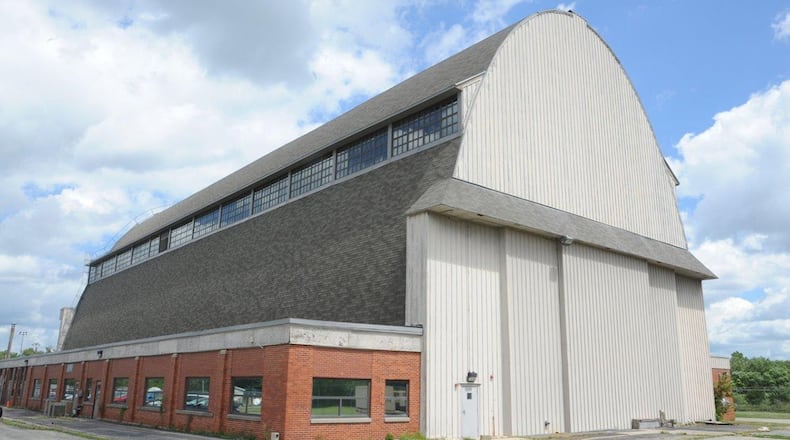“At a squadron event in January, in the heritage room I happened to notice a picture of the Barn, stating they began construction April of 1947,” said Hofstadter. “I mentioned its 70th birthday was coming up. My commander overheard me and [Lt.] Col. [Amanda] McMillian thought it would be a good idea to throw it a party.”
McMillian, 18th IS commander, said the Barn has sheltered her people for a long time, allowing them to pursue their mission as an electronic warfare squadron. They provide electronic mission support, offering battlespace preparation for electronic attack partners and assess the effectiveness of electronic warfare and attacks, along with foreign satellite data collection.
“The 18th has had a presence here since the early 2000s, but the squadron flag didn’t move here until 2010,” McMillian said. “We needed to be paired with some of the subject matter experts at [the National Air and Space Intelligence Center]. That’s why Detachment 1 originally was placed here, and we had a lot of deployment equipment, so they said, ‘You probably need the barn.’ Today, we use it for deployment set-ups and we run exercises from here so that our guys can get practice setting up and tearing down our equipment, and we also do antennae maintenance in here.”
More than just a work space, Bldg. 821 has become a home for the members of the 18th IS.
“As a unit that works behind the green door, we don’t get to bring our families into our spaces to spend time with them,” McMillian said. “So we actually have a heritage room off to the side where you can see the history of the 18th as it’s evolved over time, and we actually bring the families out here and are able to conduct squadron activities. So we’re really using it as a place where we can come together as a unit.”
“Almost every squadron event we have is here,” said Hofstadter. “It’s a large venue but doesn’t feel intimidating. Especially as an intelligence unit, having a place where we can bring anybody is kind of liberating in a way, being able to bring them in here and show them what we do in an unclassified way. We’ve had holiday parties here and we do our promotions ceremonies here. It is the best home we could have found on base.”
The odd structure was originally purpose-built to study then-cutting edge radar technology in 1947, and its every design choice was made with research in mind. The structure runs 200 feet in length, with 13 arches spanning 80 feet and supporting the roof 78 feet above. Each of the three-and-three-quarter-ton arches relies on wooden pegs and glue rather than metal to ensure the planned research would have an ideal home.
In the early 1950s, William Bahret, the father of radar camouflage, designed and built the Air Force’s first anechoic chamber for analyzing radar echo in the completed Radar Test Building. Through the following decades Bahret and those who followed him studied how radar interacted with different materials, in forms ranging from aircraft and missiles to satellites. By the ’90s, though, technology had surpassed the Barn and mounting maintenance costs ended the facility’s use for research.
Now, in the hands of the 18th IS, cutting-edge work still happens under the arched roof.
“There’s a real tie in this building to advanced technology,” McMillian said. “That’s what they were working on in the late ’40s when they built this building, and in the ’50s and ’60s, really was advanced technologies. That’s what we do as a unit, so we use it for the same thing. It’s about answering the question: How do we keep up with our adversaries and maybe even get one step ahead of them?”
After working at Wright-Patterson for more than four years, Staff Sgt. Hofstadter recognizes just how valuable the Barn is.
“We’ve been here almost 20 years, and worn a lot of hats,” said Hofstadter. “None of it would be possible without being able to store things, being able to maintain our equipment, where we practice for deployment, and where we load the trucks when we mobilize. It is the heart of our operations.”
About the Author
